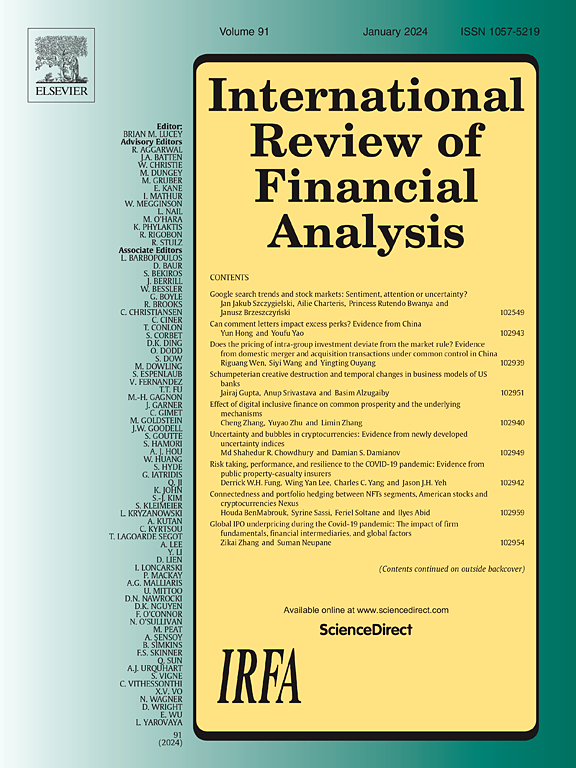银行业非凸全球技术的非径向测度建模:来自中国商业银行的证据
IF 9.8
1区 经济学
Q1 BUSINESS, FINANCE
引用次数: 0
摘要
本研究提出了一个非凸的基于松弛的全局定向距离函数,该函数包含了一个非任意输入,以提高银行效率测量的准确性。首先,该模型将固定资产折旧视为一种非可自由支配的投入,从而捕捉到其对生产可能性集的影响。其次,采用非凸全局技术假设,避免了不同时期的不可行投入产出组合,更好地反映了技术异质性。第三,利用全球Malmquist指数及其分解成分评估样本期内的效率变化,并找出其关键驱动因素。研究结果表明,16家样本银行的整体效率在研究后期有所下降,差距的扩大表明银行业的两极分化日益加剧。观察期内,纯效率变化呈波动下降趋势,规模效率变化呈温和改善趋势。这些发现表明,提高中国商业银行的生产率需要的不仅仅是内部技术调整。政策制定者应专注于鼓励领先银行参与持续的金融科技和管理创新,同时推动全行业采用经过验证的战略。本文章由计算机程序翻译,如有差异,请以英文原文为准。
Modeling a nonradial measure in nonconvex global technology for banking sector: Evidence from commercial banks in China
This study proposes a nonconvex global slack-based directional distance function that incorporates a nondiscretionary input to improve the accuracy of bank efficiency measurement. First, the model treats fixed asset depreciation as a nondiscretionary input, thereby capturing its influence on the production possibility set. Second, the nonconvex global technology assumption is adopted to avoid infeasible input–output combinations across periods and to better reflect technological heterogeneity. Third, the global Malmquist index and its decomposition components are employed to assess efficiency changes over the sample period and identify their key drivers. The results show that the overall efficiency of the 16 sampled banks declined in the latter part of the study period, with widening disparities indicating an increasingly polarized banking sector. During the observation period, pure efficiency change exhibited a fluctuating downward trend, while scale efficiency change showed moderate improvement. These findings suggest that improving productivity in China's commercial banks requires more than internal technical adjustments. Policymakers should focus on encouraging leading banks to engage in continuous fintech and management innovation, while promoting the sector-wide adoption of proven strategies.
求助全文
通过发布文献求助,成功后即可免费获取论文全文。
去求助
来源期刊

International Review of Financial Analysis
BUSINESS, FINANCE-
CiteScore
10.30
自引率
9.80%
发文量
366
期刊介绍:
The International Review of Financial Analysis (IRFA) is an impartial refereed journal designed to serve as a platform for high-quality financial research. It welcomes a diverse range of financial research topics and maintains an unbiased selection process. While not limited to U.S.-centric subjects, IRFA, as its title suggests, is open to valuable research contributions from around the world.
 求助内容:
求助内容: 应助结果提醒方式:
应助结果提醒方式:


